Recent years have seen record-breaking heat in Japan, with dire consequences for the nation’s agriculture. The climbing mercury and increasingly severe storms are directly impacting the amounts and quality of the fruits and vegetables that make their way to our tables.
Rising Temperatures in Japan
The Japanese archipelago stretches in a narrow band from north to south, covering a wide range of climates. Hokkaidō in the north has cold winters with heavy snowfall, while Kyūshū and Okinawa in the south lie in subtropical zones.
Like elsewhere on the globe, Japan has been facing the effects of climate change, with temperatures rising sharply in 2023 and remaining high since then (see the chart below).
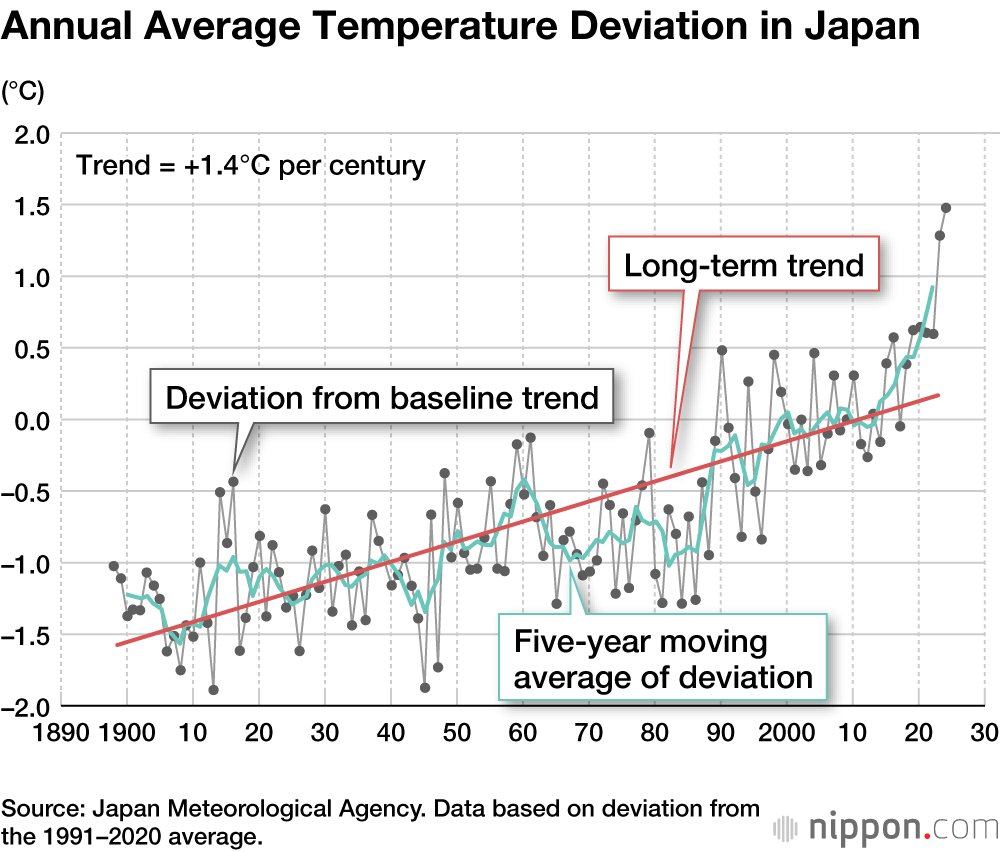
Summer temperatures are rising year by year, with an increasing number of extreme heat days exceeding 35°C. One factor is the strengthening of the Pacific High during summer. When sea temperatures near the Philippines in the western Pacific rise, air pressure over Japan increases, leading to longer stretches of sunny weather. As a result, high temperatures persist into autumn, and while cold waves still come in winter, the overall trend is for the temperature to go up.
As temperatures rise, the amount of vapor in the air increases, leading to more frequent bursts of heavy rain. The result is that there are more floods and damage from inundation, but also fewer rainy days overall, ironically raising the risk of drought. Japan’s climate is moving towards hotter temperatures with extreme rainfall patterns, and this poses a serious threat to agriculture.
Crop Quality and Yield of Decreasing
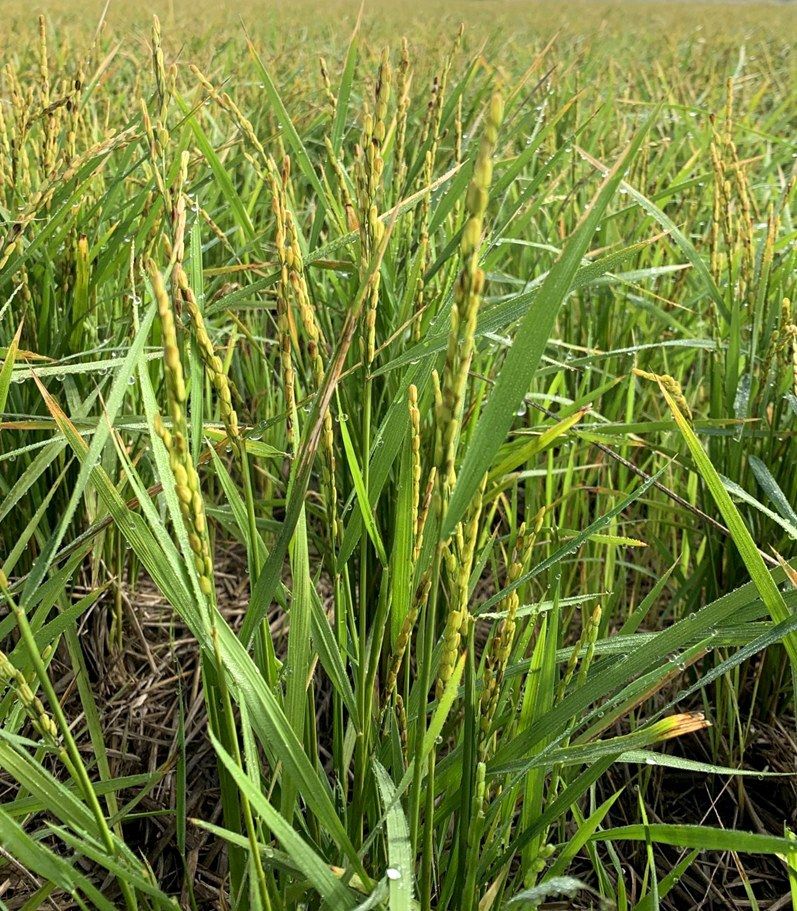
Rice plants stand tall, without drooping under the weight of healthy sheaves, when the grains fail to develop. (© Hirota Tomoyoshi)
Japan’s staple food, rice, suffers quality deterioration in high temperatures. When the average temperature during the 20 days after flowering exceeds 26°C or 27°C, the number of white, opaque immature grains increases, and the rice’s commercial value decreases. In 2023, premium varieties such as Koshihikari in Niigata Prefecture and Tsuyahime in Yamagata Prefecture were heavily affected. When the temperature reaches 35°C or higher for days during flowering season, pollination is hindered, leading to sterility and undeveloped grains. This phenomenon was widespread in Kyūshū in 2024.
Soybeans in Honshū and regions further south are also being affected by climate change. In northern Kyūshū, a major soybean-producing area, yields have been declining in recent years.
Until now, rising temperatures have been a benefit to the quality of rice in Hokkaidō. However, in 2023, the quality of the northernmost island’s premium rice brand, Yumepirika, declined. Hokkaidō’s other major crops like wheat, potatoes, and sugar beet are also affected, with high temperatures or prolonged rainfall reducing yields as well as impacting quality.
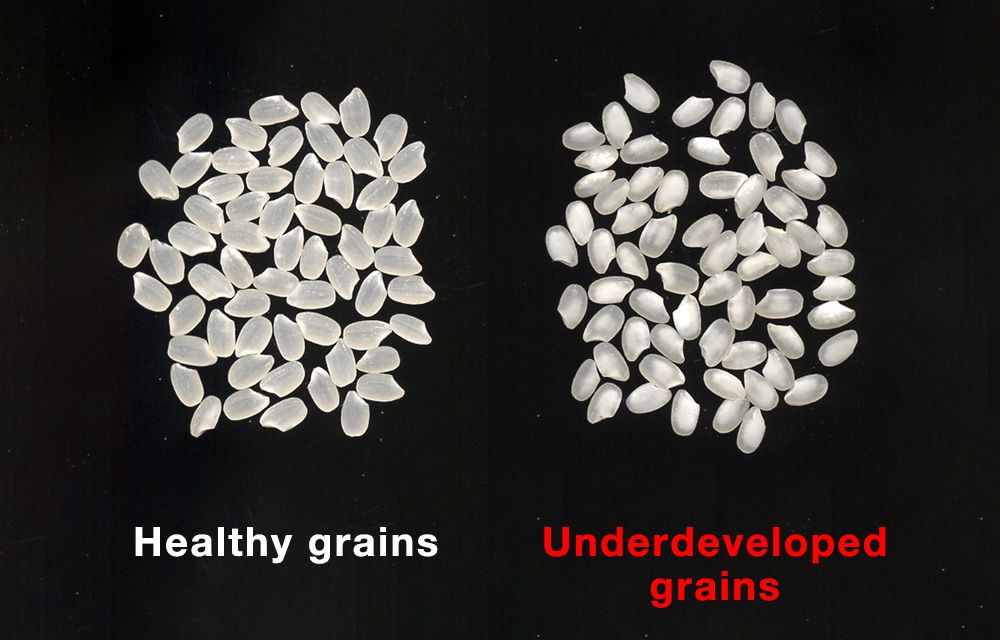
Normal rice grains (left) and white, opaque rice grains. (© National Agriculture and Food Research Organization)
Fruit and Vegetables Hit Hard
In 2023 and 2024, fruit and vegetable crops across Japan were damaged. High temperatures caused sunburn in tomatoes and eggplants, and poor pollination led to reduced fruiting.
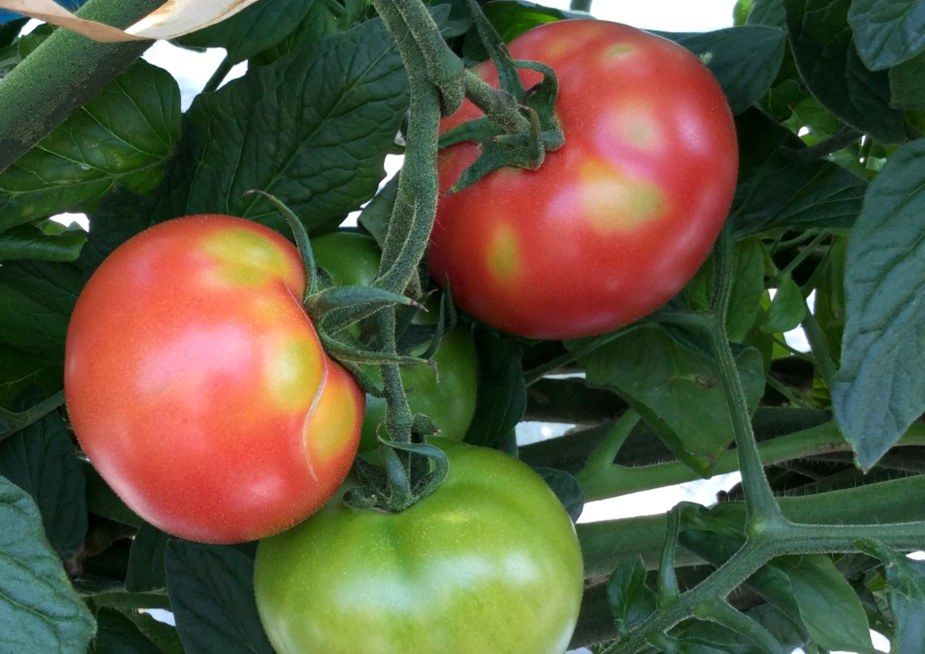
Tomatoes showing uneven coloring. (Courtesy Kumamoto Prefectural Government)
Leafy greens and root vegetables exposed to higher temperatures from winter to spring mature earlier but stop growing in summer when the temperature is too high, resulting in reduced yield. Supply becomes unstable, making price fluctuations more likely.
For strawberries, high temperatures are striking when flowers are budding, and in some cases shipments do not make it in time for the Christmas season—traditionally a time in Japan for the fruit to appear in cakes and other desserts.
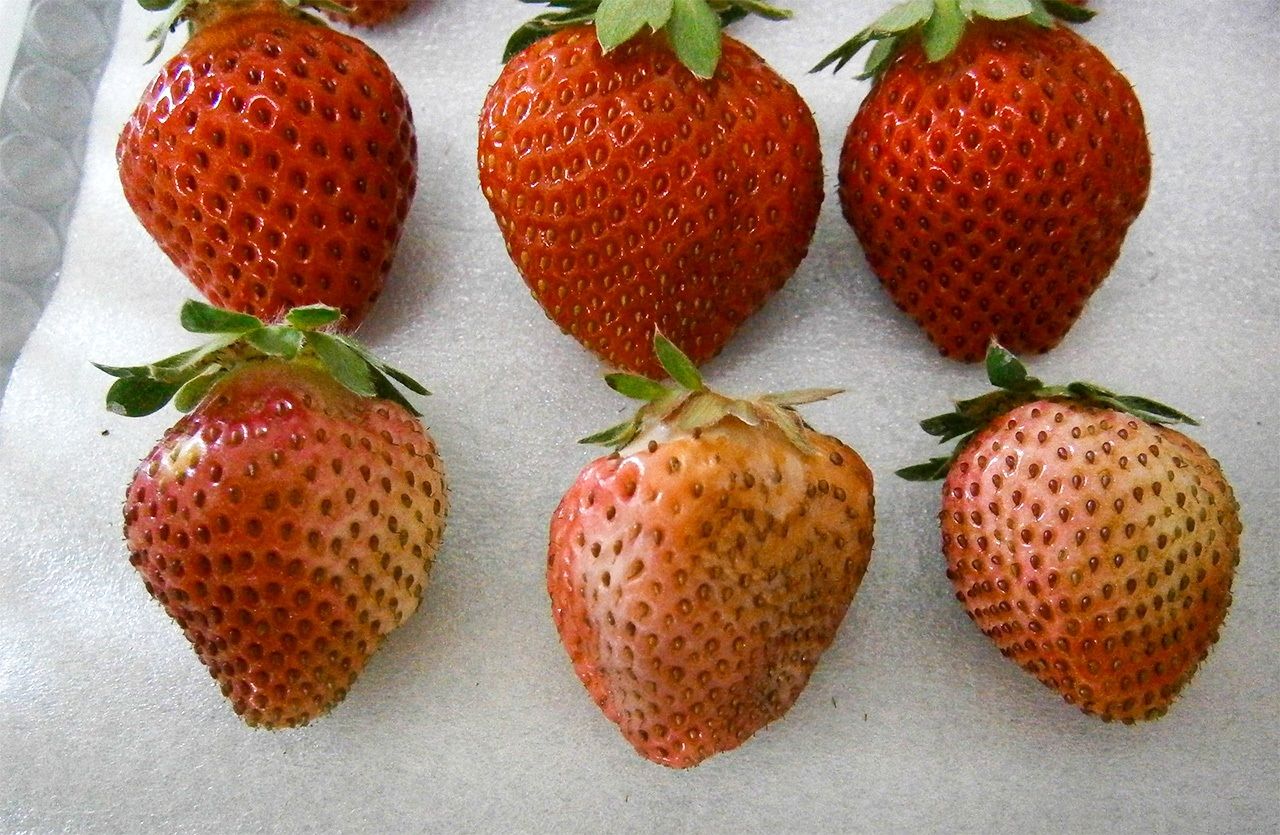
Normal strawberries (top) and sunburned strawberries. (Courtesy Kumamoto Prefectural Government)
Among fruits, sunburn and coloring problems were especially noticeable in apples, grapes, and tangerines. For apples in particular, 30% of crops sampled nationwide showed poor coloring in 2023. While higher temperatures raise sugar content in fruits, they also reduce sourness, which may disrupt the flavor balance.
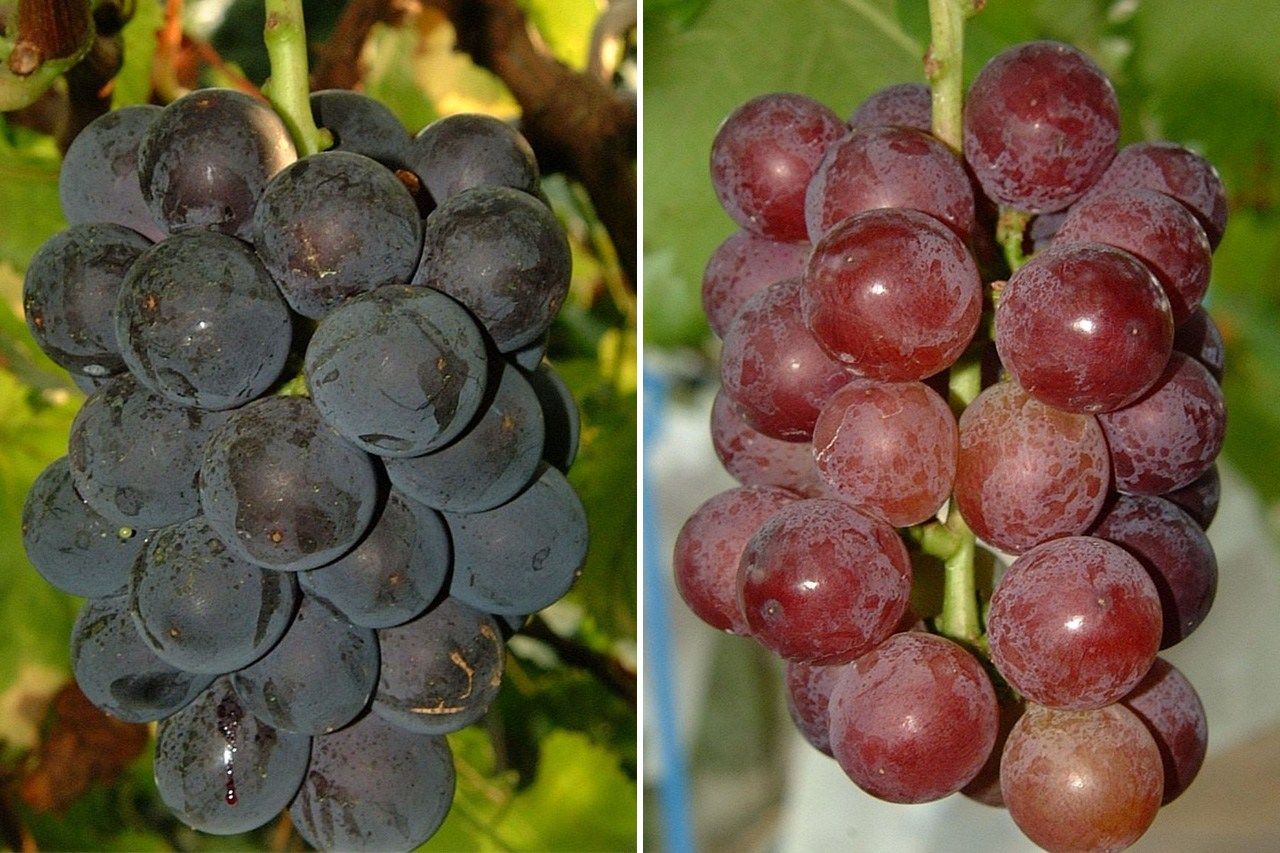
Normal grapes (left) compared to poorly colored grapes. (© National Agriculture and Food Research Organization)
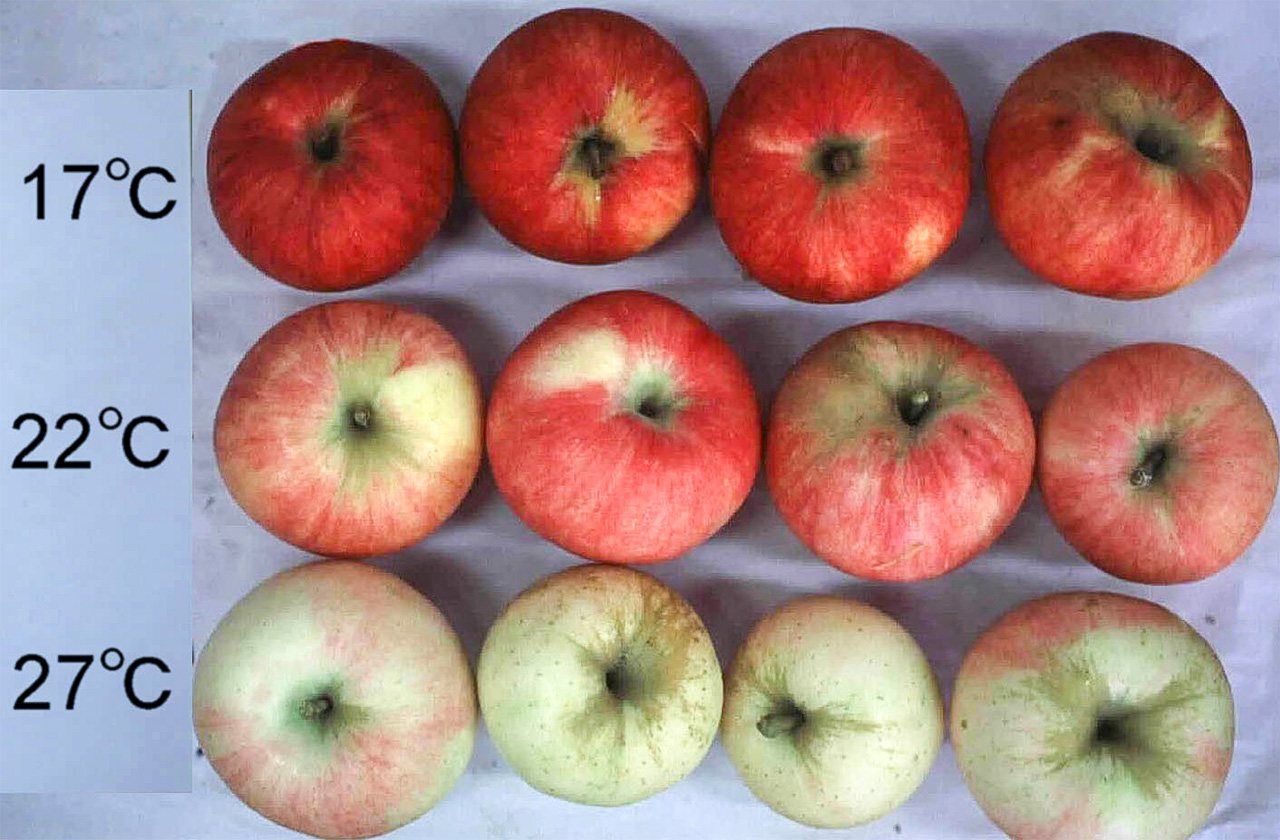
The higher the temperature, the poorer the coloring of apples. (© National Agriculture and Food Research Organization)
Vulnerable Livestock and Accelerating Wildlife Damage
Livestock such as cows, pigs, and chickens are easily stressed by heat. The impact is seen in their milk production, growth, and reproduction. Climate change also hits the forage crops these animals depend on, with high temperatures altering factors like grass species composition. Corn and forage grasses may actually grow faster and yield more when it’s warmer. However, new challenges are emerging such as quality decline, pests, and diseases.
Damage from wildlife is also increasing. Reduced snow and higher temperatures are altering habitats and ranges of wild animals, with deer, wild boar, and bears increasingly encroaching on human settlements and harming forage and feed crops. Because these crops cover large areas that cannot be intensively managed, the damage is more severe than it is for other crops.
Strengthening Measures to Avoid Damage
Various measures are underway in Japan to address the challenges of climate change. For rice, farmers are adjusting planting schedules, improving cultivation techniques, and managing water and fertilizer inputs to reduce the impact of higher temperatures. In particular, ahead of the greater levels of sunlight exposure seen in recent years, they have been applying more fertilizer before the ears of grain emerge in summer to help prevent quality loss. The development of rice varieties that can withstand high temperatures is also progressing, with a growing lineup of heat-tolerant strains now being widely adopted.
For field crops such as soybeans and wheat, cultivation is expanding northward to help offset reduced yields in Honshū and farther south. For example, soybean farming has spread to the Okhotsk region in northern Hokkaidō.
There is a wide variety of strains of fruits and vegetables available, making it relatively easy to switch to strains suited to different climates. In Hokkaidō, sweet potato and peanut varieties better suited to warmer climates are being introduced. In greenhouse farming, farmers are improving structures and cultivation environments to suppress heat and boost profitability.
Fruit trees, which take years to grow, are easily affected by changes in climate. Given the focus on fruit quality in the market, though, drastic changes can be difficult to implement in short time spans. Skilled fruit growers are diversifying their risks by cultivating multiple varieties and adjusting harvest times, thus avoiding the worst impacts of higher temperatures.
Moves to Establish New Production Areas
The introduction of new fruit varieties can mark the beginning of new production areas. In Akita Prefecture, apple farmers have begun cultivating peaches, and the region is now gaining attention as Japan’s latest-harvest and northernmost peach-growing area.
In parts of western Japan, farmers have shifted from mandarin oranges to citrus varieties suited to warmer climates and are introducing subtropical and tropical fruits. For wine grapes, maintaining the balance between sugar and acidity is vital, and production is moving to cooler, higher-altitude regions as well as to Hokkaidō, where strains suited to the climate are being grown. There is also the case of prestigious wineries from Burgundy, France, developing vineyards in Hokkaidō and producing wine there. This can be seen as part of the larger trend of international relocations of agricultural production in response to climate change.
Sales and Distribution Strategies Also Key
Responding to climate change requires changes not only in cultivation but also in sales and distribution strategies. Farmers must consider market demand for crops. These are not just agricultural products but are also economic goods, so variety selection must account for marketability as well as growability. An abundance of crops is meaningless if they don’t sell. In choosing the right strains, farmers must take into account profit and market needs.
When fruits are shipped to marketplaces, how they look is very important. However, when selling online or at farmers’ markets, flavor counts more than looks, so delivering fruit at its optimum ripeness is key. Direct sales can provide opportunities for farmers to cope creatively with climate change and can offer stable income sources for small-scale farmers and newcomers.
In dairy farming, processing milk into products like ice cream can turn higher demand from rising temperatures into revenue opportunities. This revenue can then be used to invest in heat management measures. Approaches such as sustainable livestock management and agriculture in hilly and mountainous areas aimed at adapting to climate change require communitywide measures. These strategies must consider the entire process from production to sales, as well as coexistence with wildlife.
Sustainability for Food in the Future
Agriculture in Japan is actively adapting to a rapidly changing climate through crop improvement, new cultivation methods, and relocation of production areas. Many of these efforts align with challenges faced in other places around the world, and Japan may be able to provide as well as receive valuable insights to build a sustainable future for food globally.
(Originally published in Japanese. Banner photos, clockwise from top left: Tomatoes damaged by heat, an apple, tangerines, and daikon radishes. All photos © National Agriculture and Food Research Organization except the apple, courtesy of the Iwate Prefectural Government.)

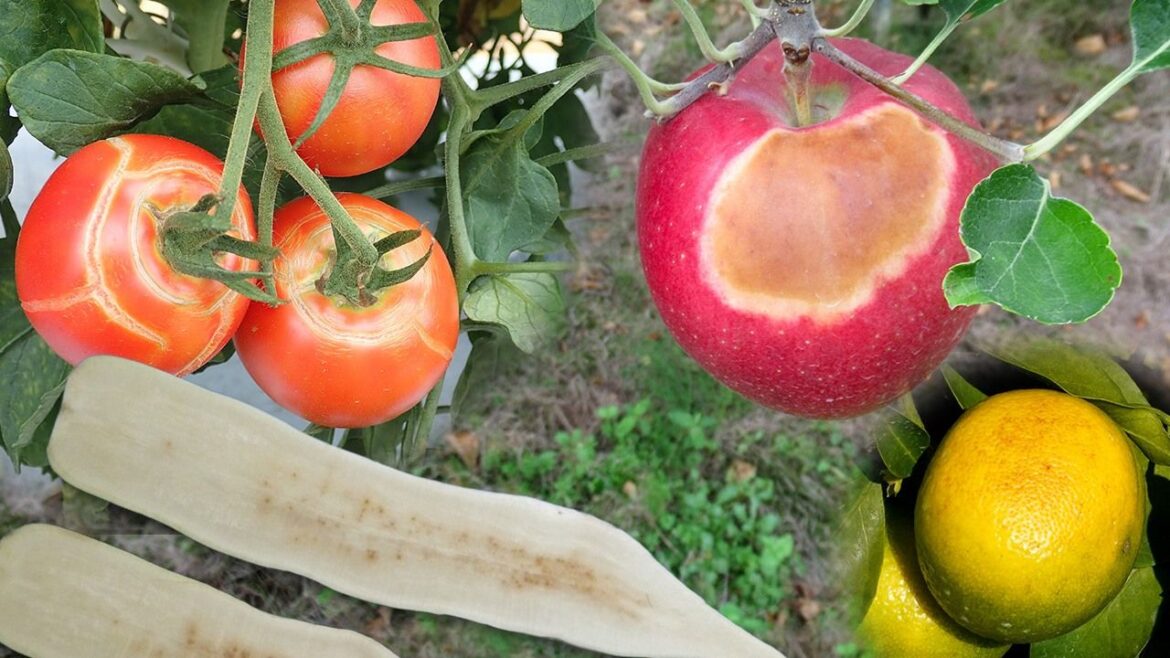
AloJapan.com